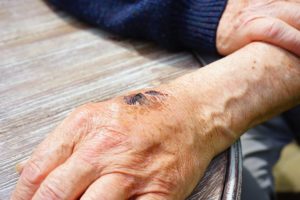May 24, 2018 - Articles by Seltzer & Associates
 Unum, one of the largest disability insurance companies in the United States, recently released their list of the top causes of disability in 2017 for claims filed with its company. According to Unum, the leading causes of long-term disability claims in 2017 were cancer, back disorders, injury, cardiovascular, and joint disorders. Injury, joint disorders, and cancer, along with pregnancy and digestive system, were also the leading causes of short-term disability claims in 2017.
Unum, one of the largest disability insurance companies in the United States, recently released their list of the top causes of disability in 2017 for claims filed with its company. According to Unum, the leading causes of long-term disability claims in 2017 were cancer, back disorders, injury, cardiovascular, and joint disorders. Injury, joint disorders, and cancer, along with pregnancy and digestive system, were also the leading causes of short-term disability claims in 2017.
Cancer
One in two men and one in three women in the United States are at risk of developing cancer in their lifetime. The most common types of cancer include breast cancer, prostate cancer, basal cell cancer, melanoma, colon cancer, lung cancer, leukemia, and lymphoma. For many people, cancer, the treatment and the side effects become disabling.
Back disorders
Back pain, herniated discs, spine disorders, and scoliosis are all common back disorders Americans face. In fact, eighty percent of adults experience low back pain at some point in their life and it is a leading cause of missed work days. While most back pain is short term, it can become chronic and lead to long-term disability. In the most extreme cases, surgery may be required.
Injury
While common injures are often believed to be the most common cause for disability, physical trauma disability claims were less common than cancer and back disorder in 2017 according to Unum. Whether its a traumatic injury, repetitive strain, burns or any other type of injury, if it is a major trauma, an injury has the potential to become disabling.
Cardiovascular
There are a number of types of cardiovascular disease, also known as heart disease. Some of the most common types of heart disease include coronary artery disease, high blood pressure, cardiac arrest, congestive heart failure, arrhythmia, peripheral artery disease, stroke, and congenital heart disease. Risk factors include age, gender, family history/genetic predisposition, and activities such as tobacco use, physical inactivity, excessive alcohol consumption, unhealthy diets and obesity.
Joint disorders
 Joint inflammation, joint deterioration and other symptoms of joint diseases often lead to pain, stiffness, swelling, and physical deformity. While medications, aspiration, physical therapy, and surgery can help, joint disease is often chronic in nature and depending on the severity, can be disabling.
Joint inflammation, joint deterioration and other symptoms of joint diseases often lead to pain, stiffness, swelling, and physical deformity. While medications, aspiration, physical therapy, and surgery can help, joint disease is often chronic in nature and depending on the severity, can be disabling.
Whether you are dealing with one of these top disabling physical conditions, psychiatric or psychological conditions, or an addiction, you may be entitled to your disability benefits. Understand how your long-term disability insurance and individual disability insurance policies apply to your condition and occupation.
—–

